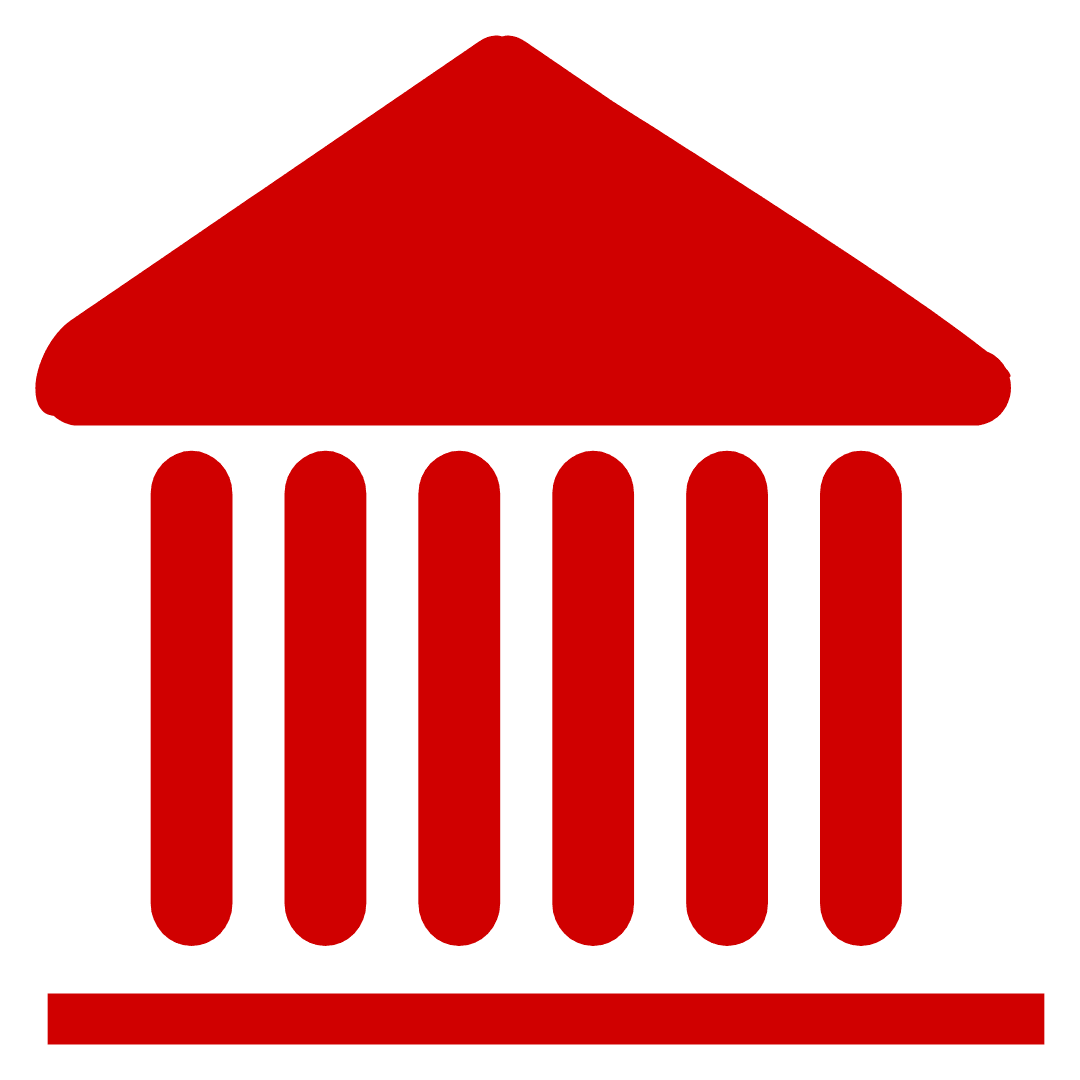
Nebraska County Fossils
Sioux
< Vertebrate Paleontology Home
A virtual journey through the Museum's vertebrate paleontology collection.
Dinohyus hollandi, "Holland's terrible hog"
Family: Entelodontidae
Geologic age: Miocene, about 19 million years old
Year fossil collected: 1908
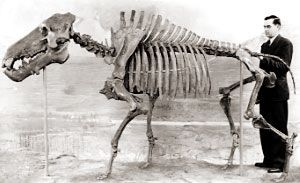
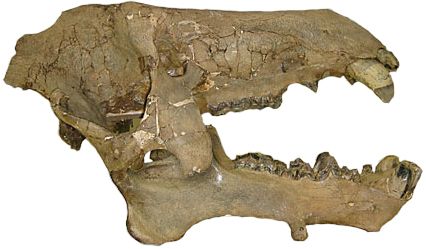
Henry Reider, State Museum preparator from 1928 to 1964, finishes the mount of Dinohyus hollandi from Agate Fossils Beds which he installed in Morrill Hall in 1929. Dinohyus is an artiodactyl (even-toed hoofed-mammal), a group that includes bison, camels, goats and pigs. Because this animal had generalized, pig-like teeth, early paleontologists believed it was related to pigs. Because of its size and fierce appearance, the name they gave it was "terrible hog"...or, in Latin, Dinohyus. We now know that it really wasn't a pig!
Hyaenodon horridus, "Horrid Hyaena-tooth"
Family: Hyaenodontidae
Geologic age: Oligocene (Early Orellan), about 30 million years old
Year fossil collected: 1933
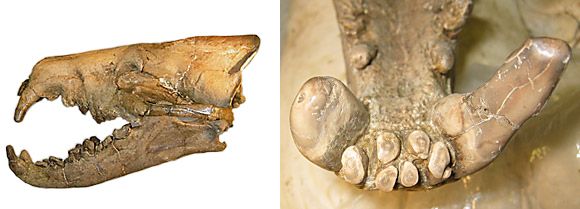
Although not related to hyaenas, this ancient carnivorous critter certainly made a similar impression upon it's discoverer. Teeth of these animals often display strange and extreme wear, indicating that their diets probably included bone. Hyaenodonts are members of a group known as creodonts. This specimen, which was finally freed from its thick shellac coating in 2004, well illlustrates its bizarre dentition.
temocyonine, Beardog
Family: Amphicyonidae
Geologic age: Early Miocene (Late Arikareean), about 19 million years old
Year fossil collected: 1981-1982
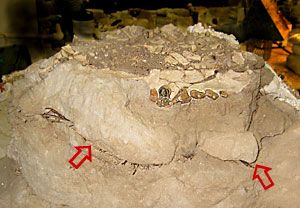
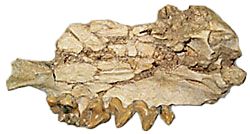
The oldest known dens of large carnivores found anywhere in the world were discovered at Agate National Monument in 1981. This crushed skull of a 19-million year old beardog was the first carnivore found in its den, seen here in profile (arrows show edge of burrow). Beardogs became extinct about 9 million years ago, but once roamed all parts of Nebraska, and were common throughout North America.
Geological Ages of Rock Formations

| Q | Pleistocene ("Ice Age") Sands, gravels, silts overlay much of the county (not shown) Pleistocene sands, gravels and silts overlay much of Nebraska and often conceal the bedrock beneath. These "Ice Age" deposits often produce the remains of mammoths, bison, horses, musk oxen, elk and other familiar mammals. Small fossils, especially, are important indicators of the climate at the time of deposition. |
| Tpo | Tertiary, Miocene/Pliocene, Ogallala Group, 2-14 million years old Ogallala Group rocks include predominantly clastic sands and sandstones composed of a mixture of Rocky Mountain debris and locally derived and re-worked sediments. Ash beds are not unusual in the Ogallala and help to precisely date the sediments. In western and southwestern Nebraska, the Ogallala beds are responsible for resistant bluffs that cap the valley sides of modern streams. |
| Tm | Tertiary, Miocene, Hemingford/Arikaree Group, 15-28 million years old The Hemingford/Arikaree group includes the Miocene Sheep Creek, Upper Harrison, Harrison, Monroe Creek and Gering Formations. These rocks typically form the higher relief ridges as seen throughout the Pine Ridge area of Nebraska. These fine to medium grained sandstones contain considerable volcaniclastic material and indicate high volcanic activity in the west. Fossils from these rocks document the transition from a forest habitat to an open grassland habitat. |
| To | Tertiary, Oligocene, White River Group, 28-40 million years old The White River Group rocks include the Chadron and Brule Formations often form large expanses of low to medium-relief badlands typical of western Nebraska (Toadstool Park) and South Dakota (Big Badlands). Siltstones and very fine sandstones dominate these units. The White River Group rocks preserve the early history of horses, rhinos and camels, all of which originated in North America. The habitats across much of the state at the time were distinctly un-Nebraskan, with low-crowned browsing mammals (forest dwellers) and their predators composing the dominant fauna. |
| Kp | Cretaceous, Pierre Formation, 66-78 million years old The Upper Cretaceous Pierre Formation was deposited in the deeper portions of the Cretaceous mid-continental seaway. It consists primarily of fine black shales. Roads and structures built on Pierre Shale hillsides often slump as the shale becomes wet. The unit produces a variety of marine vertebrate fossils including fish, mosasaurs and plesiosaurs. |




